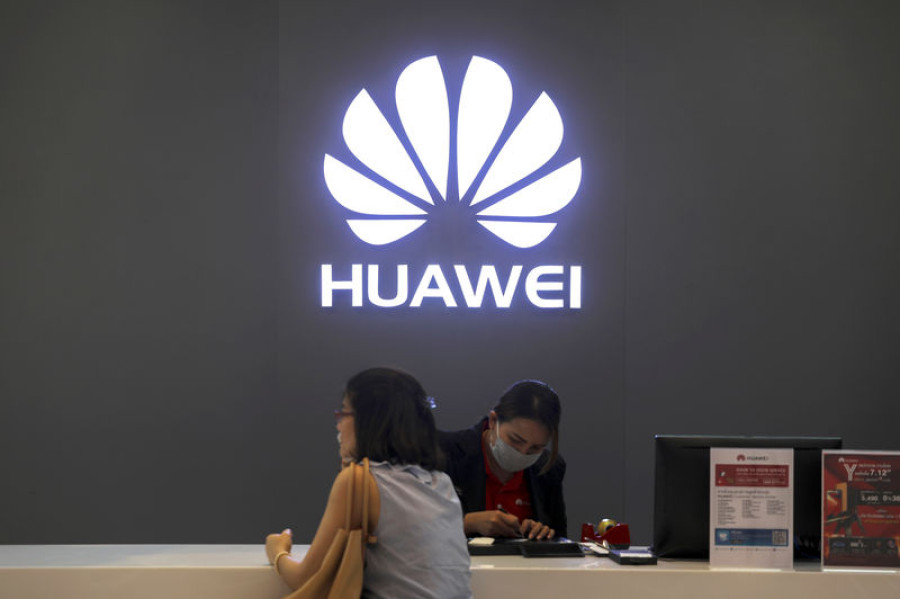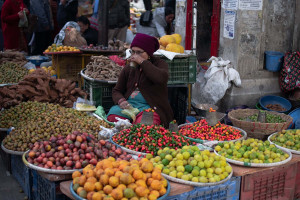Money
Huawei sales drop sharply after Google’s ban, local retailers say
‘Customers who were considering buying Huawei smartphones are now looking at other brands’
Krishana Prasain
Huawei smartphone sales in Kathmandu are starting to slow down after reports over Google’s suspension of the Chinese multinational company’s access to the Android updating system last week, according to local smartphone retailers. Google decided to cut off Huawei after the US government added the Shenzhen-based company to a trade blacklist last week.
Huawei, the number two smartphone producer in the world, had a 50 percent growth in phone sales and was making waves in the wireless industry with its 5G equipment. But the company ran into trouble after the US accused the company of using its equipment to spy on other countries and companies, and stealing intellectual property.
While the existing Huawei devices will continue to get access to Google’s Google Play, Maps and Gmail, any new smartphone launched by Huawei will not have access to any Google services.
Although Huawei will still have access to the Android operating system—available through open source licensing—it will not have any technical support and collaboration for Android and services from Google. Following the suspension of services, Huawei received a 90-day temporary reprieve from the trade ban, allowing it to issue updates to existing smartphones.
The ripple effect from Huawei’s troubles abroad is now being felt in Nepal, where both its sales and growth had seen a boom in recent years. Many retailers who spoke to the Post said they would no longer recommend Huawei to customers looking for a new smartphone.
“We cannot recommend Huawei smartphones amid such uncertainty because the customers will later blame us if any problem occurs,” said Rabina Shrestha, a smartphone shop owner at New Road.
Smartphone retailers say they have been recommending other devices to their customers. According to Shrestha, there are two types of Huawei customers—those who purchase the P series phone, which is priced above Rs40,000, and those opting for budget sets that sell for up to Rs20,000.
“Customers who were considering buying Huawei smartphones are now looking at other brands,” said RN Lamichhane, owner of Tamrakar Mobile Lab and Research Smart Mobile Care at New Road. “Many of them seem to be aware that there will be no Google updates available for Huawei smartphones.”
According to Ajay Lama, branch manager of KL Mobile Hub at Chabahil, Huawei and Samsung were two of the most popular smartphone brands among customers until two weeks ago. “But after the news about Huawei and Google became public, the number of customers asking for Huawei smartphones has dropped sharply,” he said. “We used to sell around nine Huawei smartphones daily. Now, sales have shrunk significantly.”
Huawei smartphones hold a 15 percent share of the domestic smartphone market, said Call Mobility, the authorised distributor of Huawei smartphones in Nepal. The company said that it would continue to provide support for the sets that had already been sold.
The Huawei P30 has been performing well in the market, but the company is now taking its smartphones off the shelves after last week’s development.
In an interview with the Post, representatives at Huawei’s office in Kathmandu said the impact of Google’s decision to discontinue its services will obviously be felt in Nepal, particularly on the sales of the P series and future devices. The two officials declined to comment further about the impact over its phone, saying they were asked not to speak to the media.
Huawei reportedly has a Plan B in case its relationship with the United States and the Silicon Valley gets worse. In an interview with CNBC last week, the head of the Chinese telecom giant said the company had developed its own operating system—called Hongmeng—for its smartphones and computers and it could be ready for use by this fall.
Analysts told Reuters last week that the uncertainty over the duration of the trade blacklist could see Huawei’s international shipments decline by as much as a quarter this year, and the company faces the possibility that its smartphones will disappear from international markets.




 18.12°C Kathmandu
18.12°C Kathmandu















